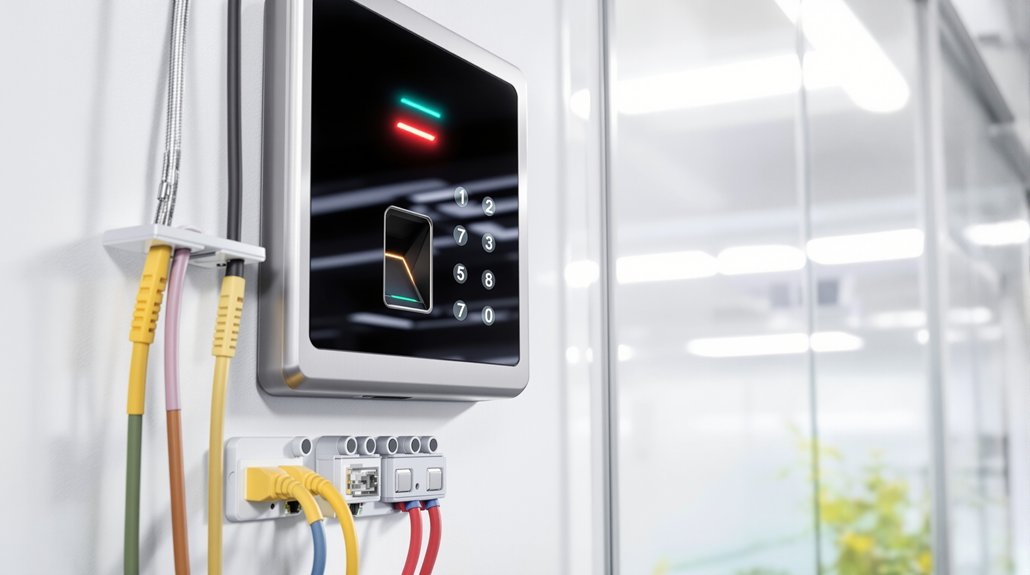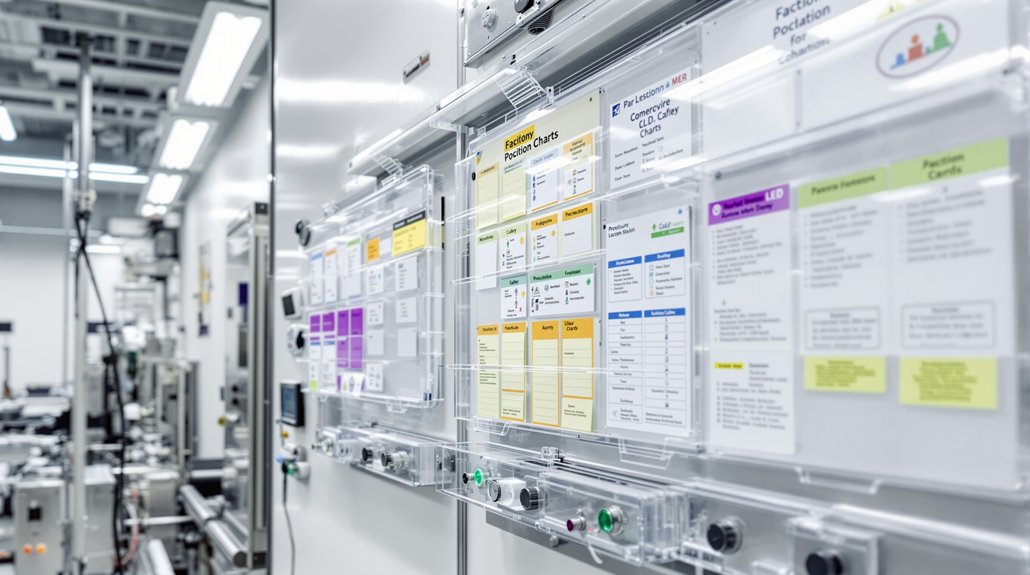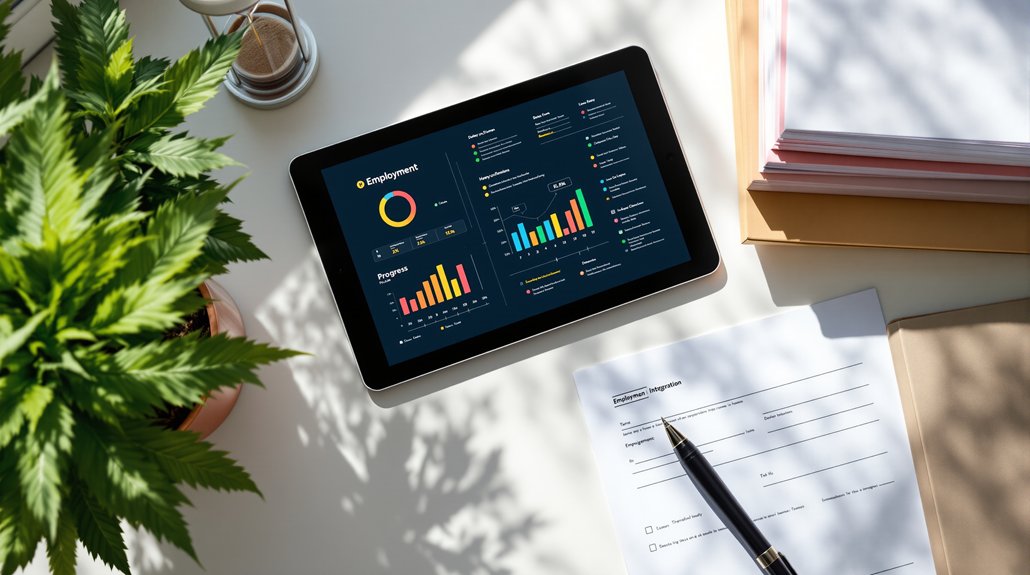Cannabis businesses face a stark reality when regulatory inspectors arrive to examine their security infrastructure. While access control systems represent a critical compliance requirement, the majority of installations demonstrate fundamental integration flaws that immediately trigger violations. These failures stem from disconnected systems that cannot communicate with point-of-sale terminals, inventory tracking software, or surveillance networks, creating dangerous gaps in operational oversight. The consequences extend far beyond simple paperwork corrections, threatening licenses and operational continuity in ways most operators fail to anticipate.
Common Integration Failures That Trigger Compliance Violations
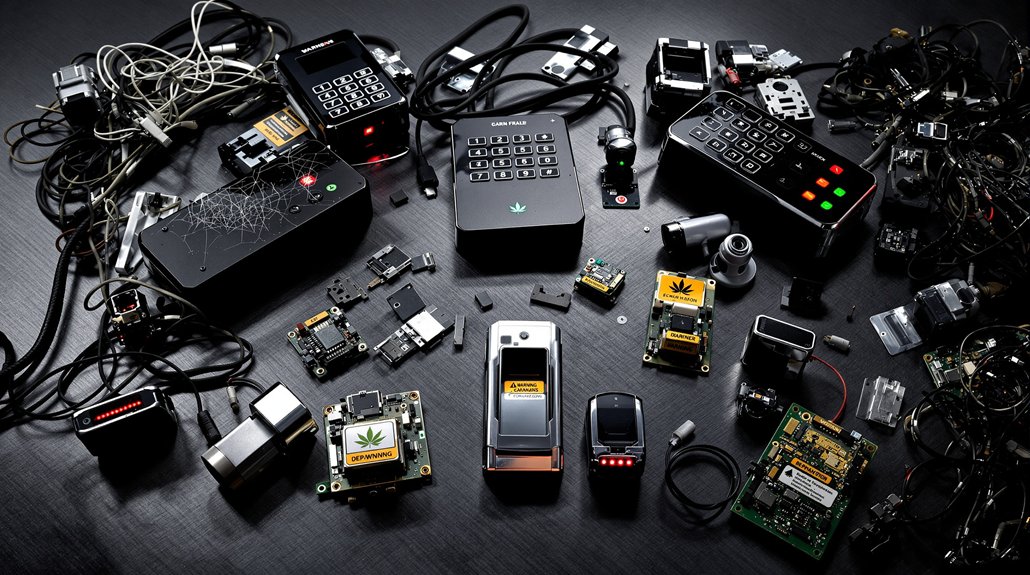
When access control systems fail to integrate properly with other security components, businesses face a cascade of compliance violations that can result in hefty fines, license suspensions, and operational shutdowns.
The most critical failure occurs when access systems operate independently from POS and inventory management platforms, creating opportunities for internal theft that accounts for up to 90% of inventory losses in cannabis retail.
Additionally, systems that lack role-based permissions allow unauthorized staff into restricted areas, triggering immediate violations during inspections. Outdated systems pose equivalent risks to having no security infrastructure at all, leaving businesses completely exposed during regulatory reviews.
These integration failures are particularly problematic for multi-state operators who must navigate varying regulatory requirements across different jurisdictions.
Failed integration with alarm systems compounds these problems, as breaches in one area cannot trigger lockdowns in others. Without proper panic button integration, employees cannot immediately notify law enforcement during security emergencies, creating dangerous gaps in crisis response protocols.
Missing entry and exit logs make it impossible to reconstruct access patterns during audits, leaving businesses unable to demonstrate compliance with regulatory requirements.
The Hidden Costs of Incompatible Security Systems in Cannabis Operations
Beyond the immediate compliance risks, incompatible security systems create a web of hidden expenses that can drain cannabis operations of tens of thousands of dollars annually.
Initial hardware investments often exceed $50,000 when disparate systems require separate installations, while monthly data storage costs average $35 per camera across multiple platforms.
Administrative burdens multiply as staff juggle different interfaces, training requirements, and manual data reconciliation processes.
Maintenance becomes unpredictable, with parallel software licensing fees compounding operational expenses. Multiple vendor contracts lead to disjointed technologies that complicate system coordination and increase operational complexity.
Expansion efforts face significant barriers when legacy systems block technology upgrades or require complete replacements for new locations. Installation timeframes can stretch beyond two-and-a-half months when coordinating incompatible systems across facilities.
Vendor lock-in situations further escalate switching costs, while fragmented infrastructure prevents efficient centralization of security management functions, creating ongoing inefficiencies that compound over time.
Building Inspection-Ready Access Control Systems That Scale With Your Business
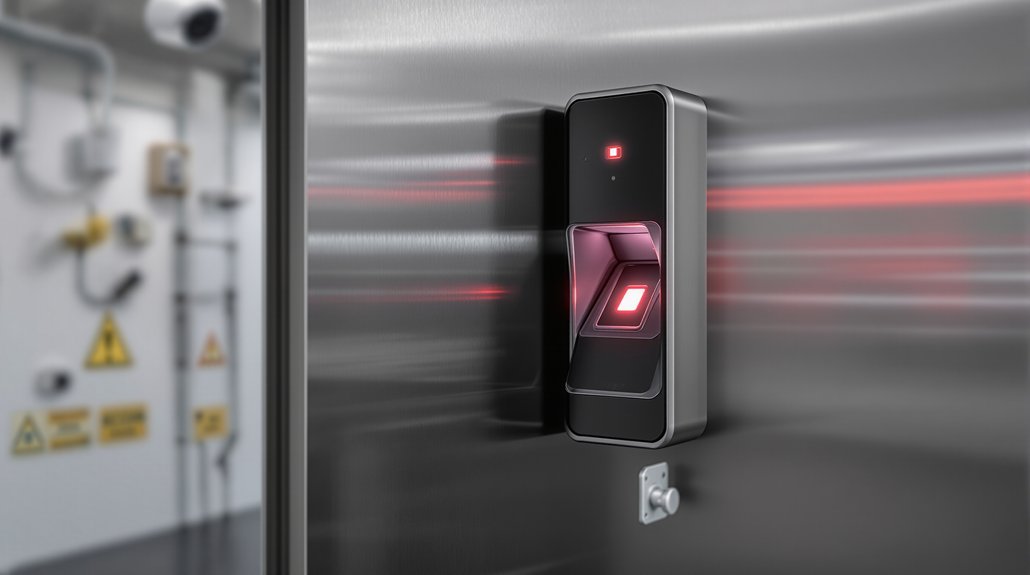
Successful cannabis operations require access control systems that satisfy both immediate regulatory demands and long-term business expansion goals, creating a delicate balance between compliance costs and operational efficiency.
California Code 5042 mandates electronic systems that monitor restricted area access, requiring thorough digital logs with timestamps and individual identification records.
Electronic monitoring systems must capture comprehensive access data with precise timestamps and verified user credentials to meet regulatory standards.
Inspection-ready installations integrate multiple authentication methods, including biometric readers for high-security zones and proximity cards with PIN verification for sensitive areas.
Scalable architecture accommodates facility growth by securing cultivation rooms, processing areas, vaults, and loading zones through unified management platforms.
Electronic logging systems automatically document all access attempts, including failed authorizations, providing essential audit data while reducing administrative burden. Modern access control systems employ two-factor authentication to create layered security protocols that exceed basic compliance requirements.
Real-time monitoring capabilities enable immediate response to security breaches, ensuring operations maintain regulatory compliance throughout business expansion phases. Proper record-keeping of authorized non-employee access to limited areas ensures ongoing compliance with state regulations.
Implementing robust access control systems should be integrated into a cannabis operator’s broader compliance-first culture to avoid the severe business disruptions that can result from security violations.
